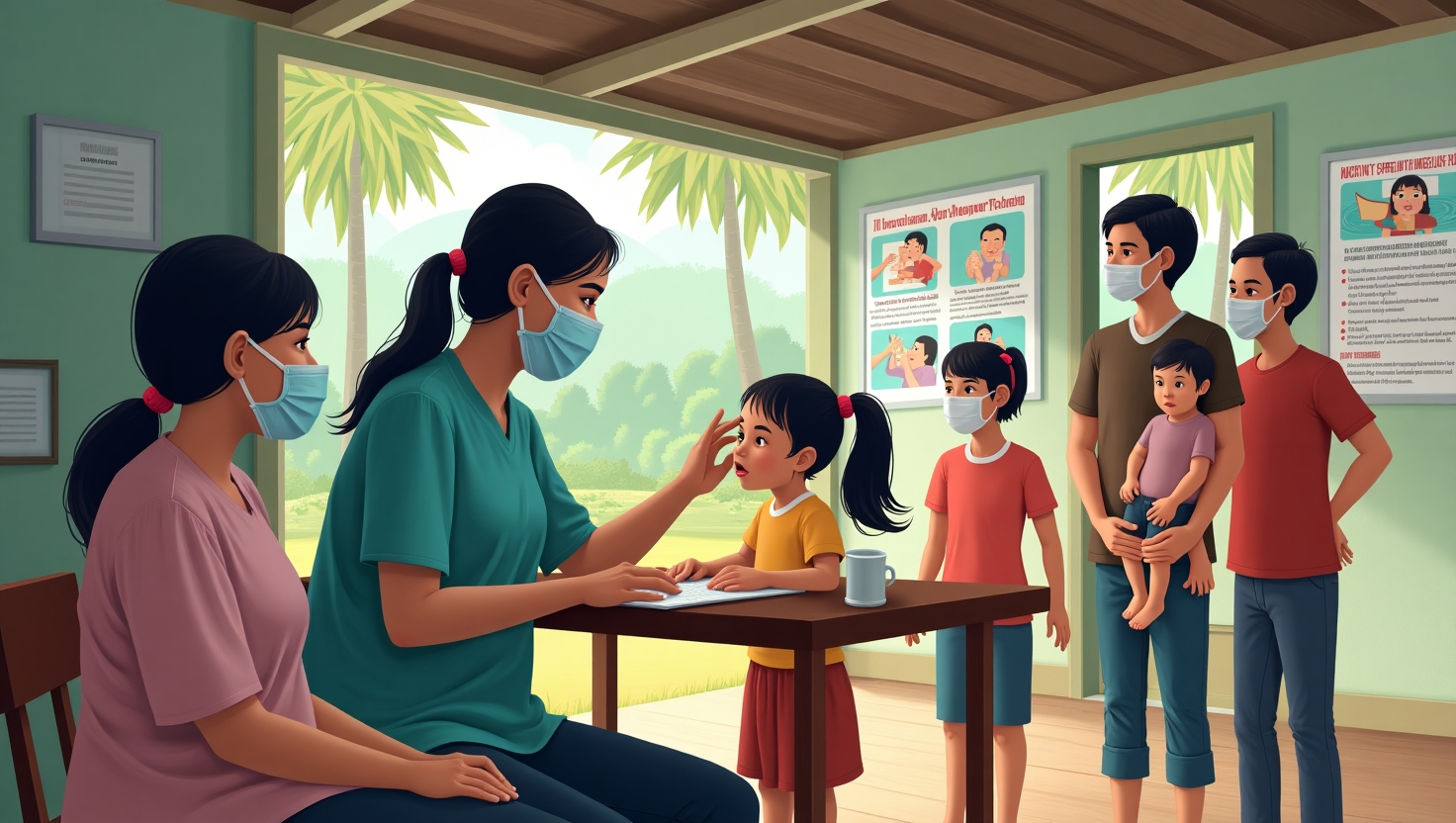
Human Metapneumovirus (HMPV) is a significant respiratory pathogen that has garnered increasing attention in recent years due to its impact on public health globally. In Indonesia, HMPV is emerging as a notable cause of respiratory illness, especially among young children, the elderly, and immunocompromised individuals. This article delves into the current understanding of HMPV, its prevalence in Indonesia, and the public health strategies needed to combat this viral threat.
Understanding Human Metapneumovirus (HMPV)
Human Metapneumovirus is a single-stranded RNA virus belonging to the Paramyxoviridae family, closely related to the Respiratory Syncytial Virus (RSV). First identified in 2001, HMPV has since been recognized as a common cause of acute respiratory infections, particularly bronchiolitis and pneumonia. Symptoms often mimic those of other respiratory viruses, including cough, fever, nasal congestion, and wheezing. In severe cases, it can lead to acute respiratory distress and hospitalization.
HMPV Prevalence in Indonesia
Recent studies indicate that HMPV is responsible for a significant proportion of respiratory infections in Indonesia, particularly during the rainy season when viral transmission rates are higher. Pediatric populations are notably affected, with a high incidence of hospitalizations due to severe respiratory symptoms. Despite its clinical significance, HMPV remains underdiagnosed, partly due to the lack of widespread testing and the similarity of its symptoms to other respiratory illnesses.
Challenges in Diagnosis and Surveillance
One of the primary challenges in addressing HMPV in Indonesia is the limited availability of diagnostic facilities. Most healthcare centers rely on clinical diagnosis without laboratory confirmation, leading to potential underreporting of HMPV cases. The lack of awareness among healthcare professionals further exacerbates this issue, as HMPV is often overshadowed by more well-known respiratory viruses such as influenza and RSV.
Public Health Implications
The burden of HMPV in Indonesia underscores the need for enhanced surveillance and diagnostic capabilities. Increased awareness and education about HMPV among healthcare providers are crucial for early detection and management. Moreover, integrating HMPV testing into routine diagnostic panels for respiratory illnesses could improve case identification and provide a clearer picture of its prevalence.
Preventive Measures and Management
Currently, there is no specific antiviral treatment or vaccine available for HMPV. Management primarily involves supportive care, including hydration, oxygen therapy, and, in severe cases, mechanical ventilation. Preventive measures are similar to those for other respiratory viruses, emphasizing hand hygiene, respiratory etiquette, and avoiding close contact with infected individuals. Public health campaigns promoting these practices could significantly reduce the spread of HMPV.
Research and Future Directions
Ongoing research is vital to developing effective vaccines and antiviral therapies for HMPV. Indonesia’s participation in global research initiatives could facilitate access to new diagnostic technologies and treatments. Strengthening healthcare infrastructure and investing in public health research will be essential to mitigating the impact of HMPV and other emerging infectious diseases.